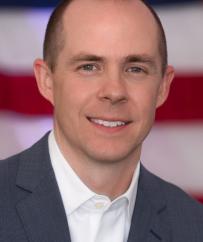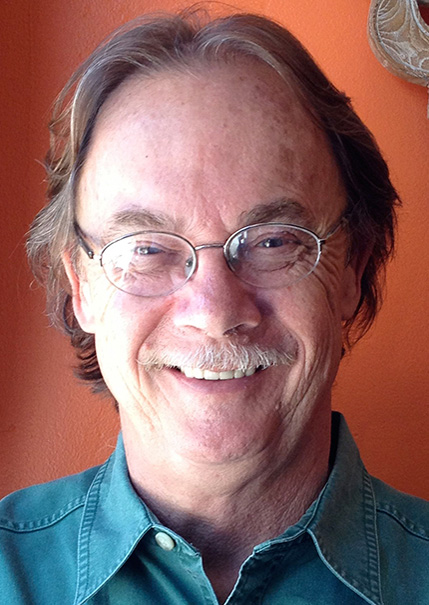In advance of the November 6 election, TPR shares a point of view on the potential impacts of ballot measures that will dramatically impact the built environment of California. California Proposition 6 seeks to repeal Senate Bill 1, a 2017 bill that increased the state gasoline tax to invest in much needed public infrastructure repairs and upgrades. In this interview, Move LA Executive Director Denny Zane and LA County Federation of Labor, AFL-CIO President Rusty Hicks explain how Senate Bill 1, championed by Governor Brown, has funded needed investment in infrastructure and resulted in new construction jobs.

Rusty Hicks
"Environmental organizations and civil rights leaders, public safety leaders and public interest groups, senior organizations and leaders in public health—they all oppose Proposition 6." —Rusty Hicks
Denny, Proposition 6 on the November state ballot seeks to repeal Senate Bill 1, a state gas tax increase championed by Governor Jerry Brown and approved in 2017 by the Legislature. What fiscal need did SB 1 respond to?
Denny Zane: When SB 1 was approved by the legislature in 2017 and signed into law by the governor, our elected leaders were seeking to address a looming crisis in the condition of California’s streets, highways, and bridges—where there is an estimated $130 billion backlog of needed repairs. That is nearly equivalent to the State’s General Fund.
A well-maintained transportation infrastructure is fundamental to a thriving economy. Poorly maintained streets, highways and bridges worsen congestion and promote inefficiency. It also means heightened risk of injury from accidents and increased automobile repair costs for our families.
Properly maintaining our highway system is far less expensive than having to replace it in the future. The most responsible way to address this current need, and to ensure our transportation system is well maintained going forward, is to create a dedicated, predictable revenue source. SB 1 does that.
SB 1 will raise over $50 billion this next decade from five different sources of revenue to ensure that costs are fairly shared by all of the many users of our transportation system—automobile users, truckers, and even, for the first time, owners of electric vehicles.
Moreover, this June, voters approved Proposition 69 to extend strict constitutional protections to SB 1 funds to ensure that these funds cannot be diverted to other non-transportation related uses.
How have the funds collected to date been invested?
Denny Zane: The roster of SB 1 investments includes both the remarkable and the commonplace, split equally between state and local governments. There are more than 6,500 projects across California, like fixing potholes, improving bridge and road safety, investing in public transportation, traffic congestion relief, and improvements to active transportation and pedestrian safety.
Locally, we will see investments in hundreds of projects—filling potholes and repaving roads, improving safety on roads and bridges and for pedestrians and bicyclists, and relieving traffic congestion. Examples include repaving 205 miles of Highway 1 and repairing the San Gabriel River Bridge on the I-405 while making sidewalk improvements for improved disabled access in Burbank.
About 15 percent of SB 1 funds will be spent each year on transit projects, including helping to accelerate some of Los Angeles County’s Measure M projects. In April, LA Metro announced that it will be receiving about $1.8 billion in grants from SB 1, including: $150 million for the Airport Metro Connector; more than $1 billion to accelerate the development of the Foothill Gold Line extension to Montclair; the East San Fernando Valley light rail project; the West Santa Ana light rail to Artesia; a Green Line extension to Torrance; Bus Rapid Transit from San Fernando Valley to San Gabriel Valley; and track improvements at Los Angeles Union Station to make Metrolink services faster.
Some of these investments will be finished in time for Los Angeles and Southern California to host the 2028 Olympic Games.
Rusty, as president of the Los Angeles County Federation of Labor, has SB 1 met expectations—specifically the governor’s projections of a multi-billion benefit to California’s economy?
Rusty Hicks: SB 1 was enacted in 2017, so its promise—improved infrastructure, more good jobs, a robust economy—has yet to be realized. The story is just beginning.
We need only to look at the initial positive impacts of Los Angeles County’s significant investment in voter-supported infrastructure expansion on the economy of Southern California. Simply put, more investment in the region’s transit infrastructure results in more good jobs for working people and a stronger economy for us all.
Rusty, what type of coalition came together to work on the language of SB 1? Do these stakeholders now have a position on Prop 6?
Solutions to our region’s biggest problems are often found in coalition with the unlikeliest of partners. The challenge of improving our transit infrastructure is no different.
It’s my understanding that the language of SB 1 was driven by state elected officials with input from business, labor, and local government leaders. However, the coalition to defeat Proposition 6 has grown beyond these initial partners in both breadth and depth. Environmental organizations and civil rights leaders, public safety leaders and public interest groups, senior organizations and leaders in public health—they all oppose Proposition 6.
Denny, in 2016, the transportation research organization TRIP issued a report that ranked LA’s roads as the second-worst in the nation, with 60 percent of roads in the metropolitan area in poor condition. That state of disrepair was estimated to cost drivers $900 per year. What impact would a yes vote on Prop 6 have on our region’s ability to make needed investments in the state’s deteriorated infrastructure?
Denny Zane: TRIP found that the Los Angeles area was second only to the San Francisco-Oakland area, with the “highest share of major roads and highways with pavements that are in poor condition.” TRIP’s report also says: “Such conditions could deteriorate even further in the future … increasing the cost of operating a vehicle.”
If Prop 6 passes and repeals funding to implement SB 1, then LA County will lose important resources that are already working to make needed road and highway repairs. California families will pay for the neglect in the form of higher automotive repair costs, increased congestion and even injury from accidents.
SB 1 is the perfect complement to Measures R and M—both approved by LA County voters by more than a two-thirds vote—to provide funds to invest in our transportation system. While SB 1 also provides significant funding to accelerate completion of our transit priorities, primarily, its funding will do for our deteriorated roads, streets, highways and bridges what R and M are doing for our transit systems.
If Prop 6 is defeated, and these investments continue, it will be a pretty remarkable time to be living in LA County.
Rusty, one of your key priorities at the LA Fed has been to create “good" jobs and ensure better workforce training for the next generation. What impact would repealing the gas tax have on these goals, both for the LA region and throughout the state?
Rusty Hicks: Repeal of the gas tax means fewer good job opportunities for working Californians. In general, less investment means fewer good jobs. And fewer good jobs means an uneven economy that doesn’t work for everyone.
At a time when much of Southern California—and certainly major portions of Los Angeles—is experiencing a prolonged construction boom, it’s critical that we support long-term investments in our region that will ensure that more good jobs are readily available well into the future.
Denny, as a former mayor with your experience in orchestrating two major public infrastructure ballot initiatives, how should the opposition to Prop 6 be marketed and framed?
Denny Zane: Always begin by respecting the intelligence of our voters. Voters know that, with respect to transportation, we in LA County have serious challenges—overwhelming traffic congestion, worsening air pollution, and road conditions that are risky and costly. Voters are far more likely to support measures that offer solutions, not just minor improvements, to major challenges. That is why we at Move LA say: Fortune favors the bold.
SB 1 was bold! It recognized that all of California, not just LA County, is suffering from serious neglect of our roads, streets, highways, and bridges—and that a crisis was looming that could erode our economy and our development as a community. Not addressing such crises invariably exacts its own costs in terms of reduced economic performance, the costs of automotive repairs, increased congestion, and lost quality of life.
The message is this: We can pay less now as a community to repair and maintain, or we can pay more as individuals to remedy the personal damage caused—or we can pay much more later, when the system truly breaks down.
SB 1 offers a fair basis for sharing these costs: Users pay proportional to their use. Prop 6 should be rejected as an opportunistic attempt to peddle the illusion that these costs are avoidable.
Rusty, likewise, what lessons or advice would you share for contesting Prop 6 on the November ballot?
Rusty Hicks: The burden is on the proponents of Proposition 6 to make their case to the voters. Therefore, a robust yet simple campaign is likely to be the most successful. Rely on the diversity of coalition partners to deliver the right message to the right voters at the right time. Do not overcomplicate message: Better roads built with good jobs. Nothing more; nothing less.
Lastly, ensure the campaign has the financial resources to fully communicate to deliver the right message from the right messenger. And I know the Governor is working overtime to ensure those resources are available.
- Log in to post comments




